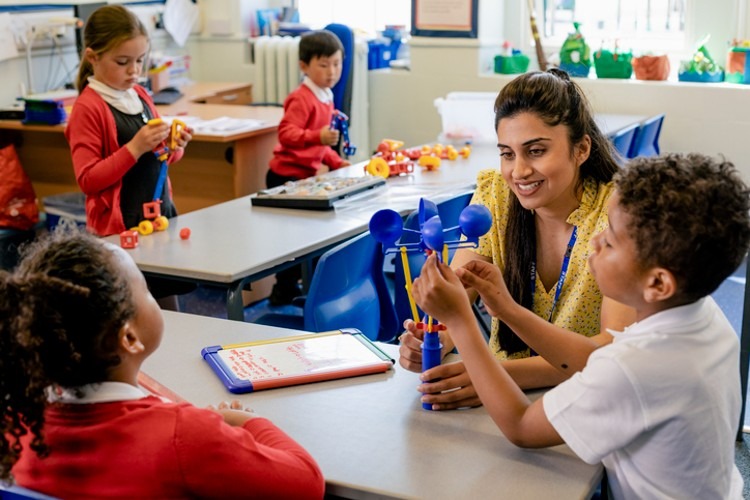
Introduction to Differentiated Instruction
In today’s diverse classrooms, one size fits all doesn’t cut it anymore. Educators face the exciting challenge of meeting the unique needs of every student. Differentiated instruction has emerged as a vital approach that embraces this diversity and fosters an inclusive learning environment. By tailoring lessons to accommodate different learning styles, interests, and abilities, teachers can create engaging experiences that allow each learner to thrive.
Imagine a classroom where students are not just passive recipients of information but active participants in their education journey. This is the promise of differentiated instruction—an opportunity for educators to empower every learner uniquely. Whether you’re a seasoned teacher or new to the profession, understanding how to implement these strategies can make a world of difference in your teaching practice and your students’ success. Let’s dive into what makes differentiated instruction essential for today’s learners!
Understanding Diverse Learners
Diverse learners come from various backgrounds and experiences. Each student brings unique strengths and challenges to the classroom. Understanding these differences is crucial for effective teaching.
Cultural, linguistic, and socio-economic factors all play a role in shaping how students learn. Some may excel in hands-on activities while others thrive on verbal instructions. Recognizing these learning styles helps tailor your approach.
Additionally, students with special needs require specific strategies to succeed. It’s vital to identify their individual requirements early on. This ensures that every learner feels valued and included.
Creating an environment where diverse perspectives are celebrated can enhance engagement. When learners see themselves reflected in the curriculum, they become more motivated.
Being aware of these aspects allows educators to craft lessons that resonate with each student’s experience, fostering a supportive atmosphere conducive to growth and achievement.
Benefits of Differentiated Instruction
Differentiated instruction offers a range of benefits that can transform the learning experience for diverse learners. By catering to individual needs, it helps students feel valued and understood.
One key advantage is increased engagement. When lessons are tailored to various skill levels and learning styles, students become more interested in their work. This heightened motivation often leads to improved academic performance.
Another benefit lies in fostering independence. Differentiation encourages learners to take ownership of their education, promoting critical thinking and problem-solving skills. Students learn how to navigate challenges on their own while receiving appropriate support when needed.
Additionally, this approach nurtures a positive classroom environment where collaboration thrives. Diverse learners share unique perspectives, enriching discussions and enhancing social-emotional growth among peers.
Differentiated instruction cultivates an inclusive atmosphere that respects each student’s unique journey through education.
Strategies for Implementing Differentiated Instruction
Implementing differentiated instruction requires creativity and flexibility. Start by assessing your learners’ needs through surveys or assessments. This insight shapes tailored experiences.
Group students based on their skills, interests, or learning styles. Small groups enhance collaboration and allow for targeted guidance.
Utilize varied teaching methods like hands-on activities, multimedia resources, and discussions. Different approaches keep lessons engaging for diverse learners.
Offer choices in assignments to empower students. Allow them to select projects that resonate with them while meeting the same learning objectives.
Use flexible pacing so all can progress at their own speed. This approach helps prevent frustration among those who need more time or challenge for advanced learners.
Involve students in setting personal goals related to their learning journeys. When they take ownership of their education, motivation increases significantly.
Tools and Resources for Creating a Differentiated Classroom
Creating a differentiated classroom requires the right tools and resources. Technology can be a game changer. Platforms like Google Classroom, Seesaw, or Edmodo allow teachers to tailor assignments based on individual student needs.
Visual aids are equally important. Graphic organizers help students organize thoughts and ideas effectively. They cater to various learning styles, making complex information more digestible.
Don’t overlook hands-on materials either. Manipulatives in math or science kits can engage kinesthetic learners who thrive through active participation.
Professional development resources also merit attention. Workshops and online courses focused on differentiation techniques provide valuable insights for educators striving to enhance their skills.
Engaging with fellow educators through collaboration fosters an environment of sharing best practices and innovative strategies tailored for diverse learners’ success.

Overcoming Challenges in Differentiating Instruction
Differentiating instruction can come with its own set of challenges. Teachers often face time constraints, making it tough to tailor lessons for every student. Planning takes effort, but the rewards are worth it.
Classroom management is another hurdle. When you cater to diverse learners, maintaining order requires clear guidelines and structure. Establishing routines can help students understand expectations while allowing flexibility in learning approaches.
Resource availability may also pose a challenge. Not all classrooms have access to varied materials or technology that supports differentiated strategies. Creativity becomes essential; leveraging what you have can lead to innovative solutions.
Training and support systems play a crucial role in overcoming these obstacles. Professional development opportunities equip educators with effective methods and new perspectives on differentiation, fostering an enhanced learning environment for everyone involved.
Conclusion: The Importance of Meeting the Needs of All Students Through Differentiation
Meeting the needs of all students is not just a goal; it’s a necessity in today’s diverse classrooms. Differentiated instruction stands as an effective approach that acknowledges and celebrates individual differences among learners. By embracing this teaching method, educators can create a more inclusive environment where each student has the opportunity to thrive.
Understanding that every learner comes with unique strengths, challenges, and interests allows teachers to tailor their strategies accordingly. This not only enhances academic achievement but also fosters a love for learning. When students feel valued for who they are—rather than forced into one-size-fits-all molds—they become more engaged and motivated.
Implementing differentiated instruction can seem daunting at first. However, with the right tools and resources, it becomes manageable and rewarding. Over time, teachers will notice the profound impact on student confidence and performance across varied subjects.
Every classroom should strive to be a place where diversity is embraced through personalized learning experiences. It’s about creating pathways for success that recognize each individual’s potential while cultivating an atmosphere of respect and community among peers.
Prioritizing differentiation ensures that no child is left behind or overlooked in their educational journey. Every effort made towards understanding diverse learners brings us closer to achieving true equity in education—a goal worth pursuing relentlessly.



Leave a Reply